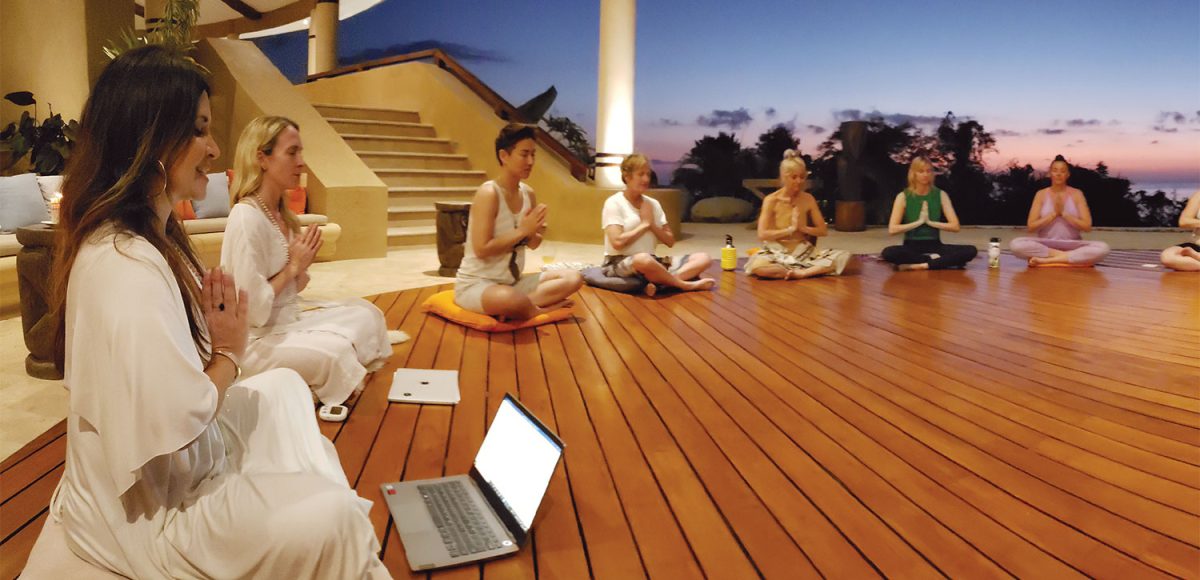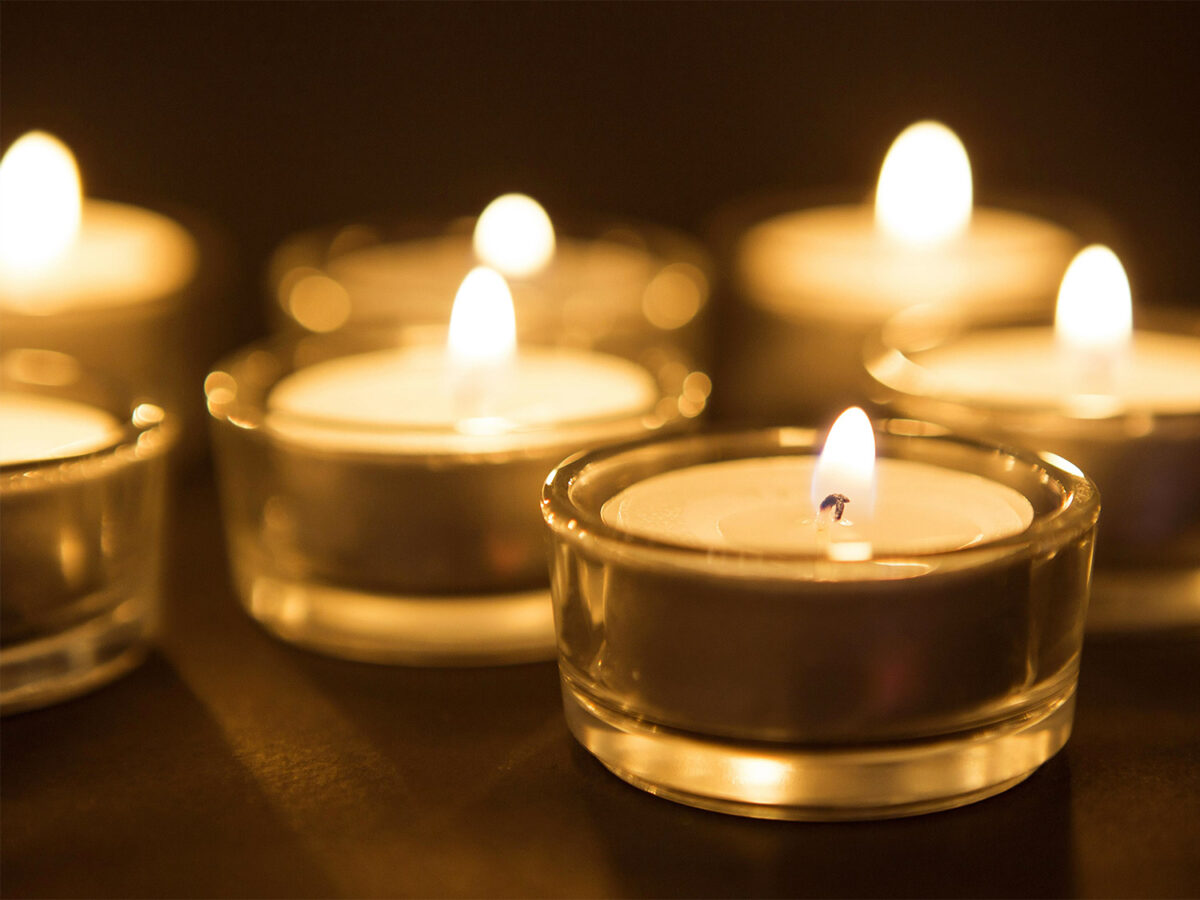Mind over matter. It’s all in your mind. The mind is a terrible thing to waste. We’re all familiar with these 20th century aphorisms that acknowledge the power of the human brain. These days, however, you’re more likely to hear the word “mindfulness” bandied around than any of these prior pithy observations. It’s so often used that it’s become a commodity. There’s a whole category of products devoted to “mindfulness” on Goop, where the word is listed in a drop-down menu under “wellness” between “aromatherapy” and “sex toys.” That might be expected, but search Amazon for “mindfulness,” and you’ll get over 40,000 results. So, what exactly is mindfulness?
The concept of mindfulness stems from Buddhist and Hindu teachings and encompasses the belief that the first step toward enlightenment begins with being present and aware. “Sati” is a Pali word, which roughly translated means “mindfulness.” Spiritually speaking, it’s a way to connect to yourself and to the universe, bringing more peace and harmony into your life.
In practice, mindfulness is the intentional act of remaining in the present moment by focusing your conscious attention on anything and everything that you do. This includes ordinary, everyday tasks like eating to controlling an otherwise involuntary action like breathing, to going inward and taking a mental inventory of your thoughts and emotions. By focusing your awareness on your actions, thoughts, emotions and your body, you become better able to recognize shifts, and to pinpoint any problems and process them as they arise. This holistic approach to mindfulness is what’s called “mind, body, spirit alignment.” And the goal is to have all three in balance.
Mindfulness has been shown to have scientific evidence-based benefits–it can reduce pain, stress, anxiety, and depression. It can lead to healthier eating habits and a better night’s sleep. And there are myriad ways to practice mindfulness in Beverly Hills–from local meditation retreats, to sound baths, and breathwork classes. You’ll even find many therapists in the area who incorporate mindfulness techniques in their sessions, combining ancient Eastern practices with Western psychology and psychotherapy. These hybrid therapies are said to help those working through difficulties like past traumas or rocky marriages.
One of the more common ways people are introduced to mindfulness is through meditation. In its very essence, meditation offers a chance to slow down, breathe, collect oneself, reflect, and remain present. There are many different types of meditation–all involve closing your eyes and taking deep regulated breaths. Some, like Transcendental Meditation, involve clearing your thoughts to allow you to tap into the deep subconscious layers of the mind. Others are guided, with an instructor painting mental images for you to follow. During the pandemic, downloads of guided meditation apps like Headspace, which touted the benefits of mindfulness, exploded.
In recent years, meditation studios have proliferated across Southern California, popular with the after-work set looking to unwind after the daily grind at the office. Here in Beverly Hills, nestled up against the rugged hills of Beverly Glen Park, lies InsightLA’s Benedict Canyon Retreat House. For 20 years, the nonprofit has been offering meditation classes, workshops, and retreats in locations across Los Angeles. The hacienda-style home, surrounded by San Pedro cactus and wild scrubland just off Benedict Canyon, is one of its main retreat centers and is host to half, full, and multiday retreats, where in-person meditation groups (for those fully vaccinated) explore topics like “Mindful Self-Compassion” and “Strengthening the Heart.”
Through Insight in Action, InsightLA’s community outreach branch, the center partners with other nonprofits and schools to provide free online mindfulness training to vulnerable populations, teachers, caregivers, and first responders.
The meditation center also offers online-only, single-class special events, which bring voices from around the world into your home. For example, last month an online class entitled, “The Mindful Journey: A Discussion with Members of the First All-Black Climbing Team to Summit Mt. Everest,” was led by a group from the Full Circle Climbing Team who shared their experiences scaling the world’s tallest mountain and how extreme athletes use mindfulness techniques to overcome obstacles. This month, you can log on to meditate with Venerable Dhammananda Bhikkhuni, Thailand’s first fully ordained Theravada Buddhist nun, followed by a discussion on practices for compassion.
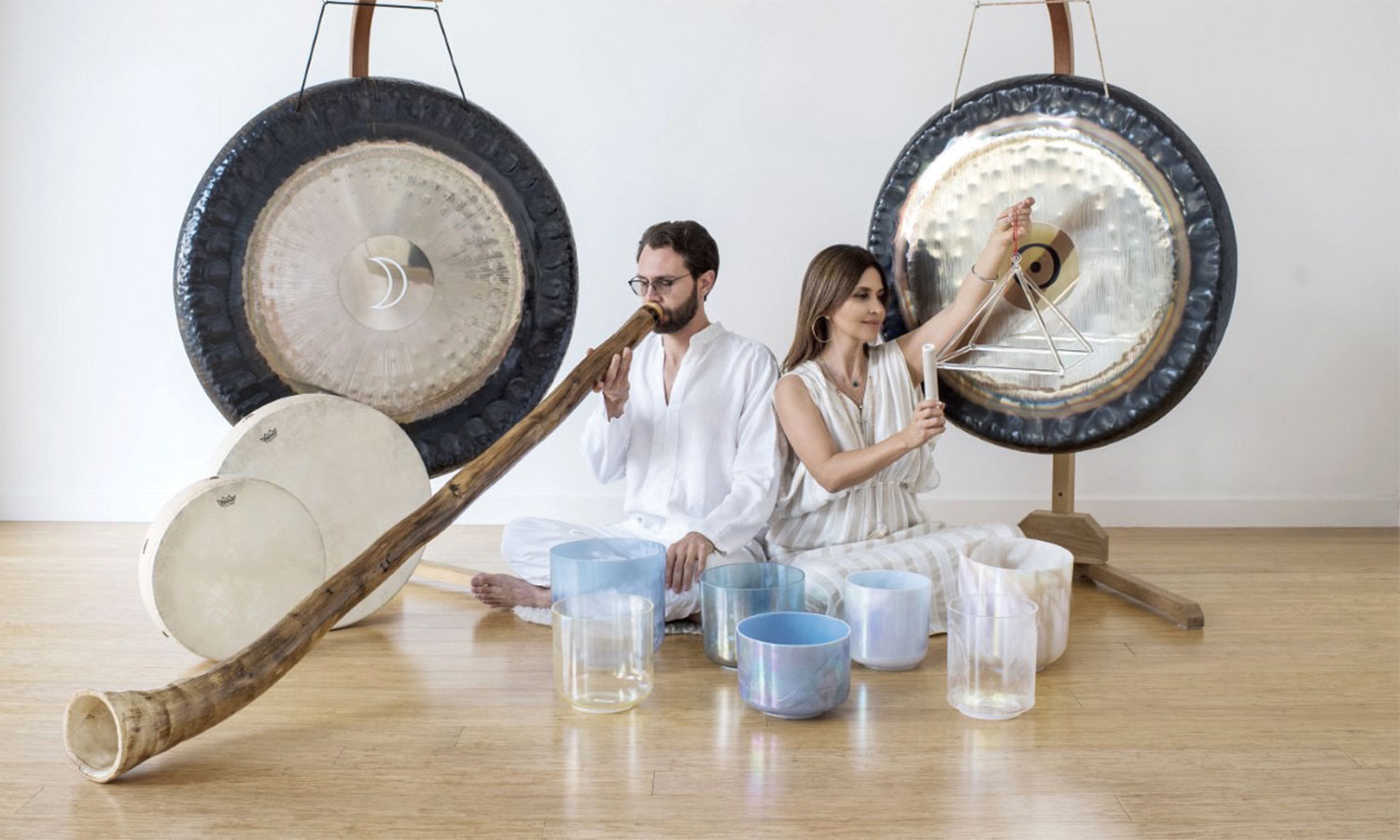
Every third Monday of the month, the Benedict Canyon Retreat House holds a group sound bath (also referred to as “sound therapy”) meditation. Sound baths are another popular way to practice mindfulness. The name alone “sound bath” conjures images of a “Calgon, take me away” experience. But, in lieu of foamy bubbles and steamy water, it’s sound waves that envelop you. The sound waves are produced by various sources, including healing instruments such as gongs, singing bowls, percussion, chimes, rattles, tuning forks, and even the human voice itself.
Shehera Mocellin, a certified Kundalini yoga instructor with an ABD in psychology, has been trained in energy and sound healing as well as meditation and breathwork. For the past seven years, she’s offered classes and group workshops focusing on these areas of her training at her Anahata Holistic Healing center on Camden Drive. During COVID-19, she was forced to offer her services via Zoom (and she still offers these online), but now she holds regular group workshops at her studio on Robertson Boulevard and by appointment only for private instruction. Mocellin also makes house calls. She has a large number of celebrity clientele and Beverly Hills regulars, who book her for one-on-one sessions. Sound healing is one of her favorite modalities.
“They say sound is the medicine of the future,” said Mocellin. “And it is. But it’s also really the medicine of the past. For centuries, indigenous people have used sound as an important tool for healing. All things in the universe vibrate at certain frequencies. The human body is no different.” During a sound bath, people are encouraged to lie down, get comfortable and feel the vibrations coming from instruments, focusing their mind and attention to the areas of the body that are responding to the music. Mocellin explained that the frequency of the notes played corresponds to different areas of the body. “I always like to say, ‘bliss, abundance, happiness, prosperity, reside on a higher frequency.’ And so, with sound, we’re able to retune ourselves and bring ourselves to a higher frequency, which then puts us in touch with these higher emotions.” From a scientific standpoint, she further explained, the frequencies of sounds have been proven to correspond to (and have an effect on) certain parts of the body–the endocrine system, thymus, pineal and pituitary glands, the liver, heart, and the brain. The sound waves work by resetting these back to their natural frequencies.
Breathwork is another pathway to mindfulness that’s become increasingly popular; a slew of apps offer lessons right from your phone, and independent studios devoted solely to this practice are popping up all the time. During breathwork classes, you again lie down, close your eyes, and you are instructed to breathe in, slowly, through your nose, to a timed inhale count, then you hold your breath for a timed number of seconds, then very slowly control your exhale, through your mouth, to a timed number of seconds.
If you’ve ever done yoga, then you’re familiar with the importance of proper breathing. And if you’ve ever had to walk yourself back from a full-blown panic attack, or suffered from intense anxiety, then you know how crucial it is to slow your breathing which, in turn, slows your heart rate. “What regulated breathing does is balance your autonomic nervous system,” explained Mocellin. “Your autonomic nervous system is made up of the sympathetic and the parasympathetic systems. Most of us are running on the sympathetic, which is your gas pedal, and we were kind of conditioned to be in that ‘Go! Go! Go!’ state. The parasympathetic nervous system is really where deep regenerative healing occurs. And, we forget that we’re supposed to create balance between these two systems. When we’re constantly in a state of ‘fight or flight,’ it puts a lot of strain on our physical body. There’s actually about 12,000 chemicals that are released when we are in that flight kind of state that creates havoc in our physical system.”
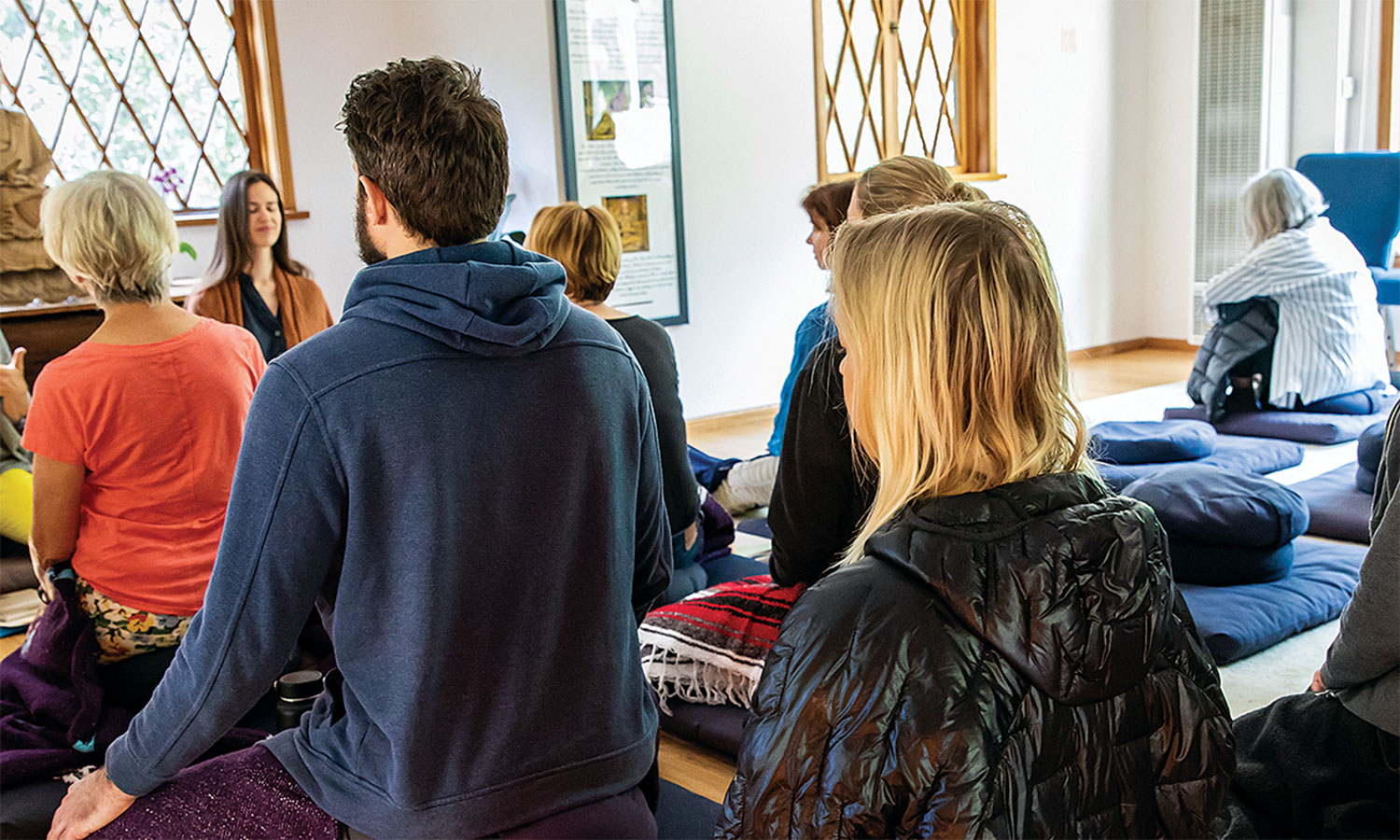
It’s an interesting concept that by controlling a normally mindless activity like breathing, and instead mindfully inhaling and exhaling, we can help ourselves, not only with biophysical reactions but also with our mental states. “Breath is the life force within us and most of us breathe super-duper shallow,” offered Mocellin. “We’re supposed to breathe four times per minute, but most of us are breathing anywhere from 20 to 30 times per minute, really fast, shallow breaths. When you are consciously breathing, and slowing down your breath, or bringing attention to your breath, you have the opportunity of being able to release memories and the wounds and the traumas from within your body. So, it helps to really go deep into the subconscious mind and the thoughts and the habits and beliefs that don’t serve us and just kind of create a portal of relief through the exhale.”
But mindfulness isn’t just the provenance of what some might shoehorn into the New Age label anymore. And in truth, mindfulness has been around for decades in scientific circles, especially with regards to the field of psychology.
The introduction of mindfulness in Western culture can be traced back to Jon Kabat-Zinn, a professor emeritus at the University of Massachusetts Chan Medical School. Kabat-Zin had studied mindfulness under the tutelage of a series of Buddhist teachers. In the late ’70s, he developed a program called “Mindfulness-Based Stress Reduction” (MBSR) to treat chronic pain. He found the more his patients attempted to avoid physical pain, the more they became distressed. But when he introduced them to mindfulness techniques, the therapy was more effective. It was from MBSR that many of the widely regarded and prevalent therapies used today like Cognitive Behavior Therapy (CBT), and Dialectical Behavior Therapy (DBT) were created or established.
For Beverly Hills-based licensed marriage counselor and family therapist (and certified meditation teacher), Elizabeth Winkler, mindfulness is a cornerstone of her practice. “My philosophy has evolved as I have evolved as a therapist,” she stated. “Incorporating meditation and mindfulness has helped accelerate my clients’ personal growth and expansion. I have great faith and understanding in a variety of therapeutic models such as narrative, depth-oriented, existential, and cognitive behavioral therapy. My model for treatment of each client depends, of course, on that particular person’s needs and goals. To the best of my ability, I meet my clients in their inner world and help unravel old beliefs, structures, and systems that usually do not serve them any longer.”
Winkler is trained in Unified Mindfulness, a system created by Shinzen Young, a Japanese-born, American meditation teacher, trained in the Vipassana tradition (as well as Zen Buddhism and Native American traditions). In Hindu, Vipassana means “to see things as they really are,” and one of the tenets of this tradition is to acknowledge and feel your emotions and thoughts without judging them. It is one of India’s most ancient techniques of meditation, taught more than 2,500 years ago and is believed to aid with a variety of ailments like stress and anxiety. It has even been shown to help those battling substance abuse.
Young’s use of mathematics to illustrate his abstract meditation concepts has drawn academics, like neuroscientists at Harvard Medical School, University of Massachusetts Medical School, Yale, Carnegie Mellon, and the University of Vermont to collaborate with him on research studies to bridge scientific paradigms and the benefits of meditation.
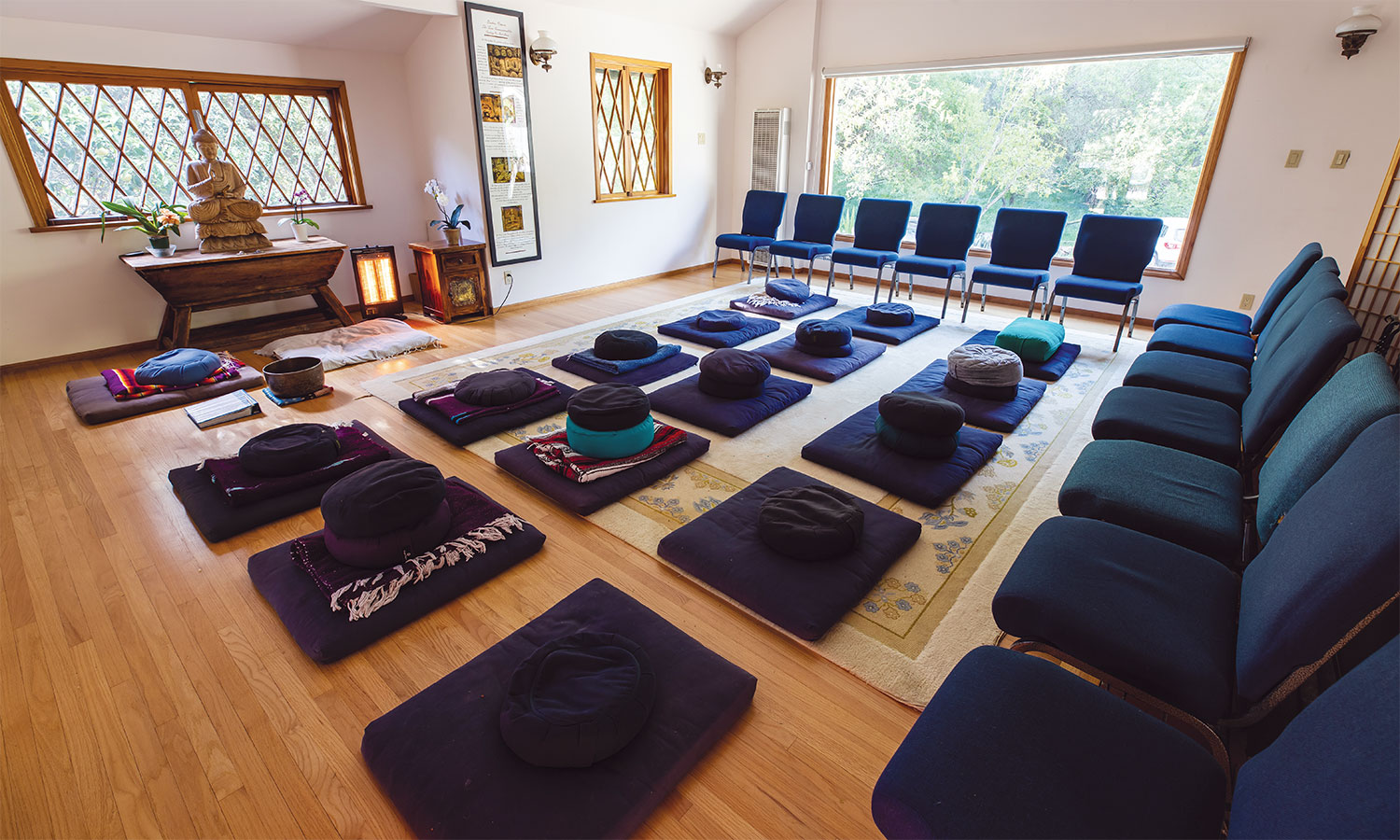
In addition to Winkler’s mindfulness-based counseling for clients, she spreads her message of the benefits of mindfulness freely with her guided meditation videos, set against a soothing backdrop of crashing waves on a seashore, on YouTube. Also, she offers nearly a dozen mindfulness downloads on her website. These downloadable PDFs and audio clips, with titles like “Connecting to Your Inner Calm” and “Accept and Reset,” cover a range of topics and include mindful meditations.
Mocellin sums up the ultimate goals of mindfulness, “When you focus on the future, it’s just worry. When you focus on the past, it’s often pain. Mindfulness is about the here and now. And it’s available to us in every moment. You can be mindful of simple practices, such as your breath, such as walking, such as sipping, or such as eating, and so all of life becomes a meditative journey through mindfulness.”



